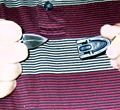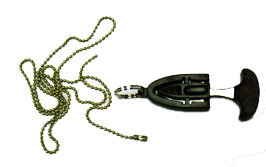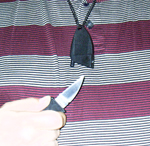 Firearms columnists have defended “mouse guns” more than once on the grounds that a pocket-pistol in your pocket is more effective than a .45 automatic locked in your safe. A diminutive, small-caliber firearm may be the only handgun you can carry concealed, these columnists argue, making these less-than-ideal, underpowered popguns far preferable to the unarmed alternative. Critics of this view have countered that large handguns can be concealed with a little ingenuity and foresight. Why carry a tiny gun firing a puny cartridge, they demand, when a .45 can be concealed under a loose shirt?
Firearms columnists have defended “mouse guns” more than once on the grounds that a pocket-pistol in your pocket is more effective than a .45 automatic locked in your safe. A diminutive, small-caliber firearm may be the only handgun you can carry concealed, these columnists argue, making these less-than-ideal, underpowered popguns far preferable to the unarmed alternative. Critics of this view have countered that large handguns can be concealed with a little ingenuity and foresight. Why carry a tiny gun firing a puny cartridge, they demand, when a .45 can be concealed under a loose shirt?
That debate is moot where knives are concerned, specifically because — with rare exceptions — restrictions on handguns aren’t based on the dimensions of the gun. To “stay legal,” a handgun owner rarely needs to consider the physical proportions of the weapon. He or she is more concerned with licensing for the firearm as such.
Knife owners know, however, that their blades are restricted often based purely on blade size. We are assuming, for purposes of this article, that you cannot or will not carry a firearm for whatever reason, or that you desire a knife to use as a backup weapon. We will further assume that you have selected the knife as a defensive implement as well as a utility tool. Finally, we will assume that you work in an environment that demands the discretion of a “mouse knife,” or that you operate under legal restrictions on blade length that leave only tiny knives as options.
How does one get the most defensive use out of a very small knife? You must recognize it for what it is: a cutting implement that, regardless of blade length, can slash, sever, and lacerate to the depth of its cutting edge.
Hock Hochheim, in his The Knife Fighting Encyclopedia, describes an incident in which a man was killed by another man armed with a two-inch pocketknife. The blade pierced the victim’s heart just far enough to be lethal. This, however, is the exception rather than the rule. Generally speaking, the larger your knife, the more effective it is as a fighting tool (up to a point). That’s just a fact. No sane person would choose to fight with a two-inch blade when a five-inch blade was an option. It stands to reason that thrusting techniques are increasingly less advisable, then, as your blade shrinks in size.
For that matter, the design of many small knives precludes thrusting. No, for our “mouse knife” defensive theory, we must focus on cutting, slashing techniques in recognition of the small knife’s design limitations.
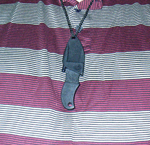
Tiny knives are excellent tools for giving you an advantage in tight quarters and at close range. Think of them as a means of growing claws. Fight as you would normally fight at close range, but know that each strike with one of your “paws” will rend flesh and draw blood.
The way you grip your small knife will depend largely on its design. I prefer the “modified saber” grip for a knife like my Cricket, which is wide and flat and lends itself to this thumb-stabilized grip.
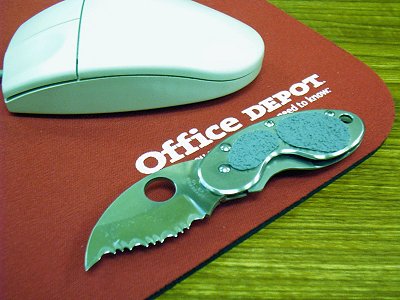
The Spyderco Cricket, great for discreet office carry.
The specifics are really up to you and your individual fighting style or system. Armed with a tiny knife, you must keep in mind that you have almost no additional reach and cannot perform thrusts to much effect. Tailor your responses to these limitations.
Given what I’ve just said, I will now admit that there is an exception to the rule. If your small knife does not facilitate slashing (the most utility can be gained by choosing one that does), you can still use it to deliver rapid poking attacks. Picture being stabbed repeatedly with a pencil stub. It might not kill you, depending on its length, but you would find it… deterring. Small punch daggers, neck knives, and other short thrusting tools can be jabbed like mad into an attacker’s extremities. The defender pumps his or her arm like a jackhammer in executing the technique.
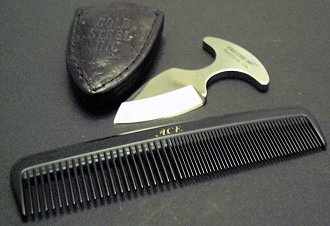
Diminutive Cold Steel push dagger.
Small knives are not ideal for self-defense and would be few martialists’ first choices. They have a surprising amount of power, however, and may be the only equalizer available in some situations. Do not dismiss them.
A tiny knife is still a knife and must be treated with respect.
